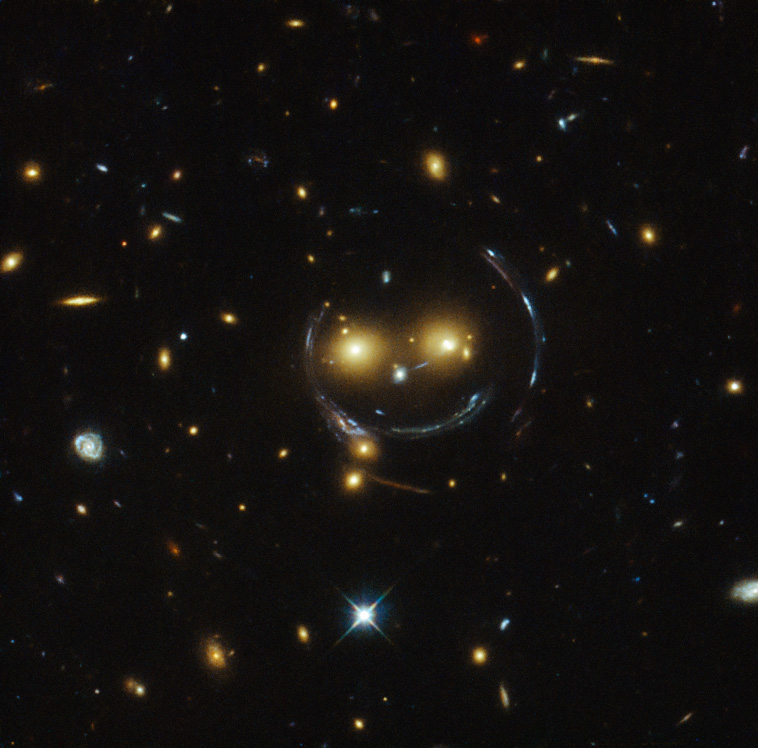Early in 2013, I was enrolling at the International Space University (ISU:
http://www.isunet.edu) and wanted to use the opportunity to work on space simulator
celestia.Sci as the Individual Project (a mini-thesis) of my Masters degree there. Dr. Fridger Schrempp, professor emeritus at the
Deutsches Elektronen-Synchrotron (Germany's largest particle accelerator lab) and development lead of celestia.Sci, agreed to be an academic co-advisor for this project, which would have a focus in astronomy, astrophysics, space or cosmology. This project would demonstrate that celestia.Sci could serve as a framework for Masters and Bachelors thesis work. Eventually, the project was successful and you can read my
ISU report and the
paper presented at the 65th International Astronautical Congress (IAC) 2014 in Toronto.
 |
| Smiling gravitational lens caused by the galaxy cluster SDSSJ1038+4849. NASA & ESA |
Fridger and I agreed on the topic of gravitational lensing, for which a quick prototype I had done using OpenGL fragment shaders suggested promise. Given Fridger's vast academic experience as a professional (astro-) particle physicist and advisor of Masters and many PhD students, there was no problem from the side of ISU to making him officially a co-advisor (the other advisor had to be an ISU faculty member). This was a perfect match, since he is also the lead of the celestia.Sci project! In November of 2013, I introduced him as a potential advisor to the faculty at ISU, and ISU gave full support to this idea. The other advisor would be Dr Hugh Hill, professor of space sciences at ISU.
Next I was required to submit a document to ISU, outlining my plan for the project. The aim was to create a general framework for gravitational lensing that is accurate for a wide range of astronomical objects while also giving smooth framerates.
This is the plan I submitted.
Here are the main motivations and project aims:
- Interactive, 3-D simulation of Gravitational Lensing in a realistic deepspace/cosmic environment
- Overcome strong limitations of earthbound lensing observations
- Don’t have to be an astronomer to use it
- Educational
Continue reading...
This article series on implementing gravitational lensing in celestia.Sci was originally published on the Celestial Matters forum.

No comments:
Post a Comment